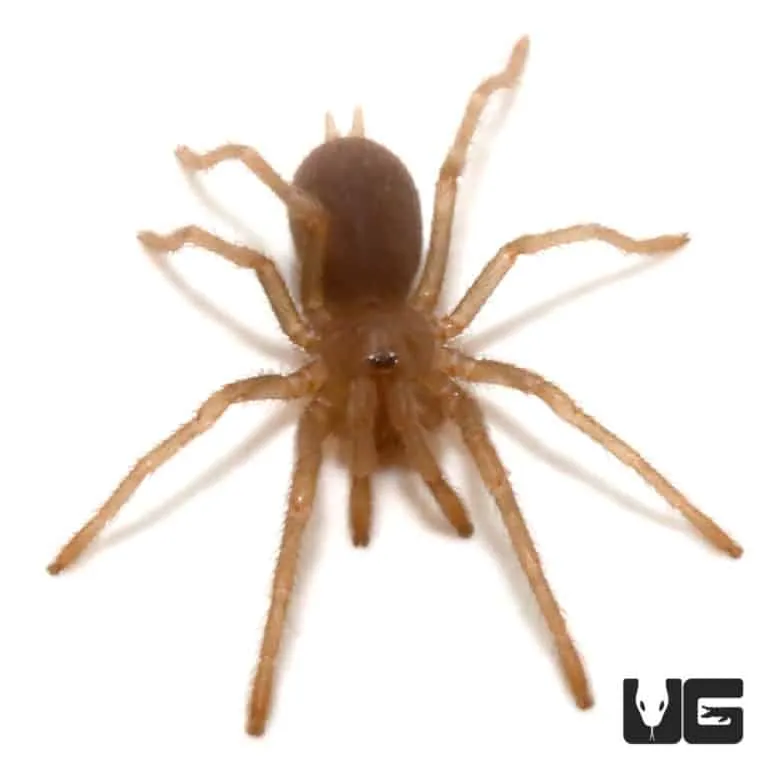The Philippine Dwarf Tarantula, a fascinating and relatively small species, has gained popularity among tarantula enthusiasts. This comprehensive care sheet provides essential information for successfully keeping these captivating creatures. With the right knowledge and care, you can create a thriving environment for your Philippine Dwarf Tarantula. This guide covers the five most important aspects of Philippine Dwarf Tarantula care, ensuring your pet’s health and well-being.
Choosing the Right Enclosure for Your Philippine Dwarf Tarantula
Selecting the appropriate enclosure is crucial for the health and happiness of your Philippine Dwarf Tarantula. The enclosure should provide a secure, comfortable, and enriching environment that mimics their natural habitat. The size and design of the enclosure play a significant role in the tarantula’s behavior and overall well-being. Ensure that the enclosure is escape-proof, well-ventilated, and offers adequate space for movement and exploration. A suitable enclosure will not only protect your tarantula but also make it easier for you to observe and care for your pet. A well-chosen enclosure contributes significantly to the tarantula’s longevity and quality of life.
Enclosure Size and Setup
Philippine Dwarf Tarantulas, being a smaller species, don’t require a large enclosure. A ten-gallon tank or a similarly sized enclosure is often sufficient for an adult. The enclosure should be wider than it is tall, as these tarantulas are primarily terrestrial. The setup should include a substrate, such as coconut fiber or a mix of peat moss and vermiculite, that retains moisture and allows the tarantula to burrow. Include a hide, such as a piece of cork bark or a pre-made hide, for the tarantula to retreat to and feel secure. The enclosure should also have a shallow water dish and appropriate ventilation to maintain the necessary humidity levels. Avoid using mesh lids, as tarantulas can get their claws caught.
Substrate and Decoration
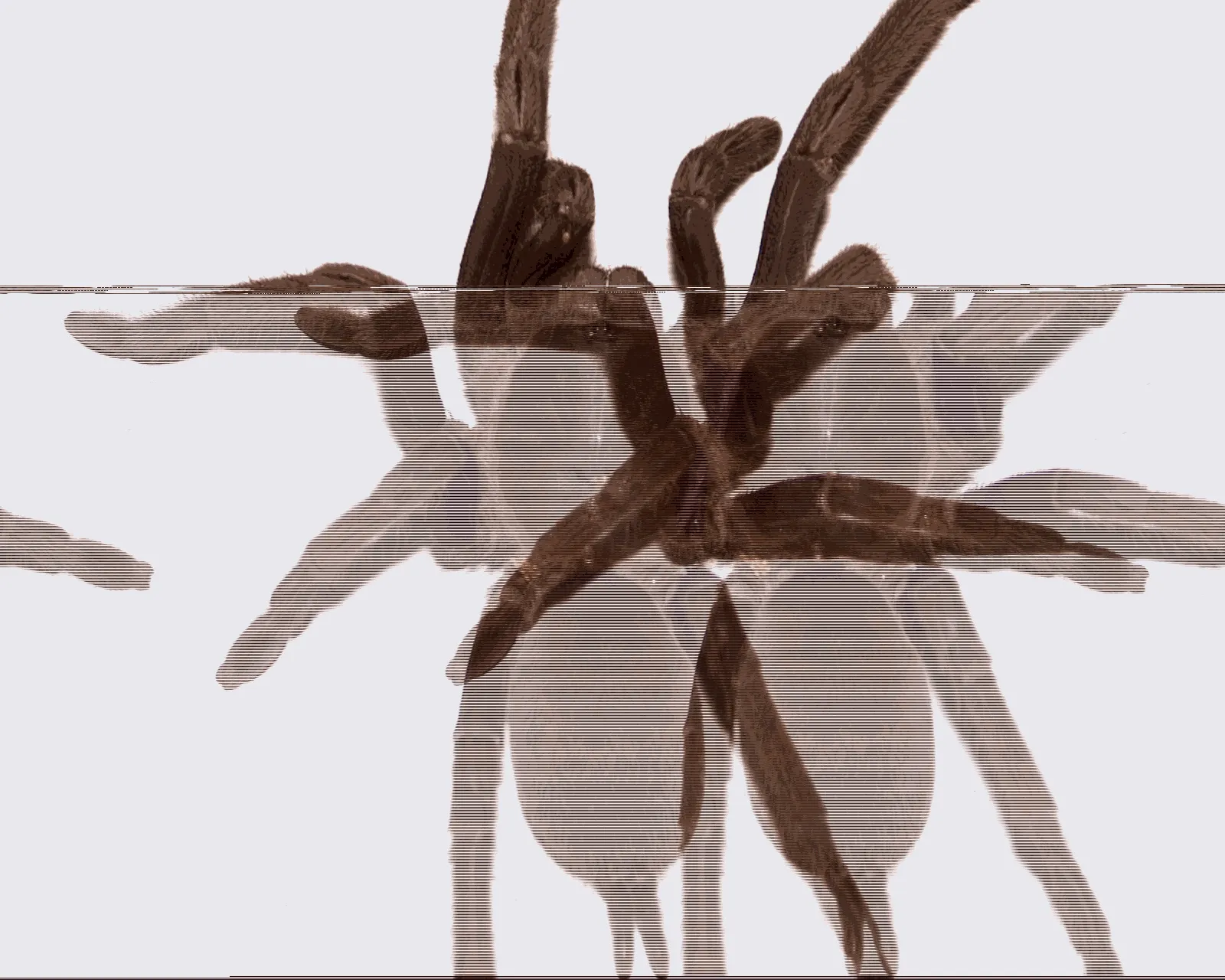
The substrate serves as the foundation of your Philippine Dwarf Tarantula’s habitat, providing a comfortable surface for movement and a means to maintain humidity. Coconut fiber is a popular choice, offering excellent moisture retention and a natural appearance. Alternatively, you can use a mix of peat moss and vermiculite, which also provides good moisture control. Avoid substrates with sharp edges or harmful chemicals. Decorations should be chosen to enrich the environment and provide shelter. Cork bark, artificial plants, and appropriately sized rocks can create a visually appealing and stimulating habitat. Ensure that any decorations are securely placed to prevent them from falling and potentially injuring your tarantula. The substrate should be deep enough for burrowing, allowing the tarantula to express its natural behaviors.
Maintaining the Ideal Temperature and Humidity
Creating the right climate is critical for the health and well-being of your Philippine Dwarf Tarantula. These tarantulas thrive in specific temperature and humidity ranges, and maintaining these conditions is essential for their molting, feeding, and overall health. Regular monitoring and adjustments are necessary to ensure that the enclosure environment remains optimal. Investing in a reliable thermometer and hygrometer is a wise step in monitoring the conditions inside the habitat. Ensure that the enclosure remains stable in its temperature and humidity to prevent stress and potential health issues.
Temperature Requirements
Philippine Dwarf Tarantulas generally prefer a temperature range between 75-85°F (24-29°C). A consistent temperature is more important than precise numbers. You can achieve this using a heat mat placed on the side of the enclosure or a low-wattage heat lamp. Avoid placing the heat source directly under the enclosure, as this can cause the substrate to dry out too quickly and overheat the tarantula. Monitor the temperature regularly using a thermometer placed inside the enclosure. Ensure that the heat source is properly regulated and does not pose a burn hazard to your tarantula. The ambient room temperature may be sufficient, but supplementary heating is often needed, especially in cooler environments.
Humidity Levels
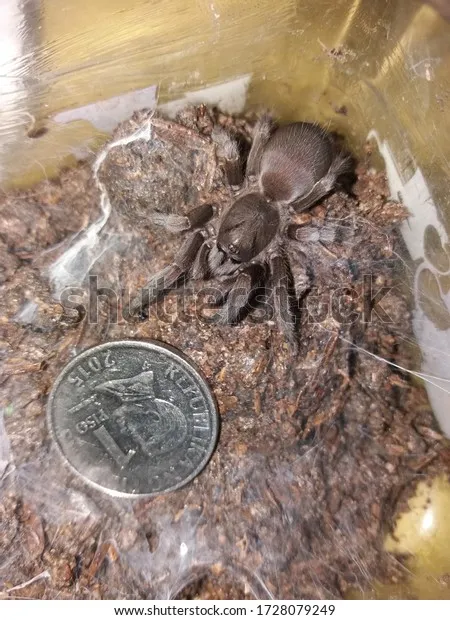
Humidity is another critical factor in Philippine Dwarf Tarantula care. They require a humidity level of approximately 60-70%. You can achieve this by misting the enclosure with dechlorinated water, typically every few days. The frequency of misting will depend on the ventilation and the type of substrate used. Monitor the humidity level using a hygrometer, and adjust the misting schedule as needed. The substrate should be slightly moist, but not waterlogged. Proper ventilation is also essential to prevent mold growth. Ensure that the enclosure has adequate ventilation to allow for airflow while maintaining the desired humidity. Regularly check the enclosure for any signs of mold or excessive condensation.
Feeding Your Philippine Dwarf Tarantula
Proper feeding is crucial for the growth, health, and overall well-being of your Philippine Dwarf Tarantula. Providing the right food items and adjusting the feeding frequency based on the tarantula’s age and size are vital aspects of their care. Overfeeding can lead to health problems, while underfeeding can hinder growth and cause stress. Careful observation of your tarantula’s behavior and appetite will help you determine the appropriate feeding regime. Using the right insect feeder and ensuring their health is equally important in a good feeding regime.
Appropriate Food Items
Philippine Dwarf Tarantulas primarily feed on insects. Crickets, mealworms, and roaches are common and suitable food items. The size of the food item should be appropriate for the size of your tarantula; the insect should generally be no larger than the tarantula’s body. It is best to feed pre-killed insects to avoid the risk of injury to the tarantula. Gut-load the feeder insects with nutritious food, such as vegetables and commercial insect food, before feeding them to your tarantula. This practice ensures that the tarantula receives a balanced diet. Always remove any uneaten food items within 24 hours to prevent mold growth and to maintain a clean environment. Introduce a variety of insects to provide a more balanced diet.
Feeding Frequency
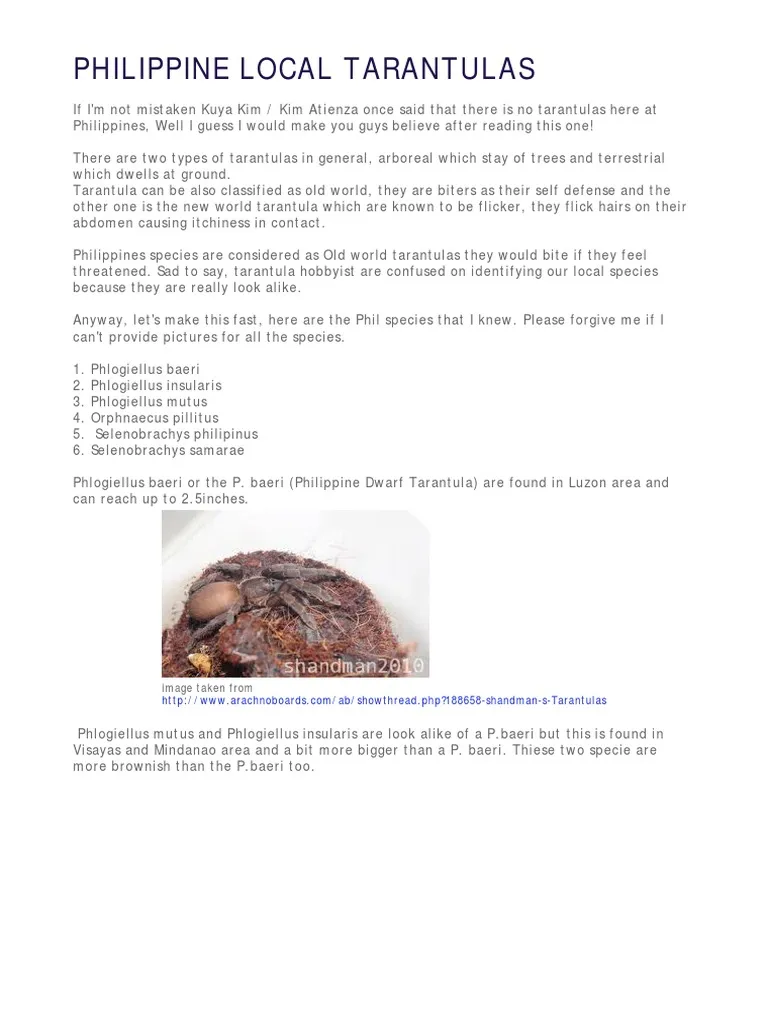
The feeding frequency depends on the tarantula’s age and size. Spiderlings should be fed two to three times per week. Juveniles can be fed once or twice a week, while adults can be fed once every one to two weeks. Observe your tarantula’s abdomen; a well-fed tarantula will have a plump abdomen, indicating that it is receiving sufficient food. Adjust the feeding frequency based on the tarantula’s appetite and overall condition. Refusal of food can indicate that the tarantula is about to molt or is stressed. Always provide fresh, clean water, even if the tarantula is not eating frequently.
Watering Your Philippine Dwarf Tarantula
Providing access to fresh, clean water is essential for the health and hydration of your Philippine Dwarf Tarantula. They need a constant supply of water to maintain their bodily functions and overall well-being. A shallow water dish is generally sufficient, but misting the enclosure also helps maintain humidity and provides an additional source of water. Regular monitoring and maintenance of the water source are necessary to ensure that your tarantula has access to clean drinking water. Providing water is an important part of their care, and will help to keep the tarantula healthy and hydrated.
Water Dish and Hydration
A shallow water dish is essential. The dish should be small enough to prevent the tarantula from drowning. Use a water dish that is easily accessible and cannot be tipped over. Ensure that the water dish is placed in a location that is not directly under a heat source. The water dish should be cleaned and refilled regularly to prevent contamination and the growth of bacteria. You can also mist the enclosure with dechlorinated water, especially during molting, to help maintain proper hydration and humidity levels. Always use dechlorinated water or bottled water to prevent exposure to harmful chemicals.
Monitoring Water Levels
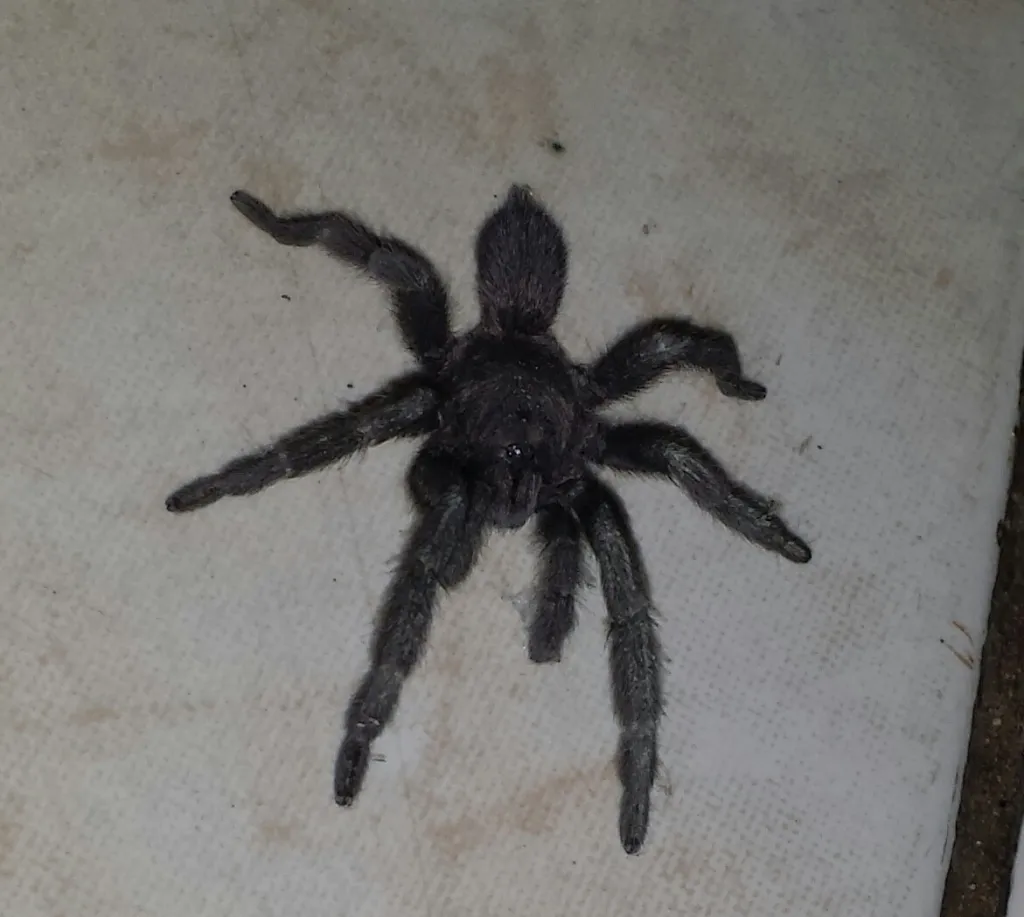
Regularly check the water dish to ensure that it is full and clean. Refill the water dish with fresh, dechlorinated water as needed, typically every 1-3 days. If you notice any debris or waste in the water dish, clean it immediately. Observe the tarantula’s behavior for signs of dehydration, such as lethargy or a wrinkled appearance. If the tarantula appears dehydrated, increase the frequency of misting or provide a larger water dish. A well-hydrated tarantula will appear healthy and active. Providing a consistent supply of fresh water is a fundamental aspect of Philippine Dwarf Tarantula care.
Handling and Safety Precautions
While Philippine Dwarf Tarantulas are generally not aggressive, it is essential to exercise caution when handling them. Tarantula bites can be painful, and the venom can cause allergic reactions in some individuals. It is recommended to handle these tarantulas only when necessary. Always prioritize the tarantula’s safety and well-being. Respecting their space and understanding their behavior are key to safe and enjoyable interaction. Careful observation and a calm demeanor are essential when interacting with your tarantula.
Safe Handling Practices
Handling Philippine Dwarf Tarantulas is not usually necessary and is often best avoided. If you must handle your tarantula, do so with extreme care. Always handle the tarantula close to a surface, such as a table, to minimize the risk of a fall. Avoid sudden movements or actions that could startle the tarantula. Use a soft brush to gently guide the tarantula if it is necessary to move it. Wash your hands thoroughly before and after handling the tarantula to prevent the transfer of chemicals or bacteria. Avoid handling your tarantula if you are ill or have any open wounds on your hands. Always remain calm and composed to prevent any potential stress to the tarantula.
Recognizing Signs of Stress
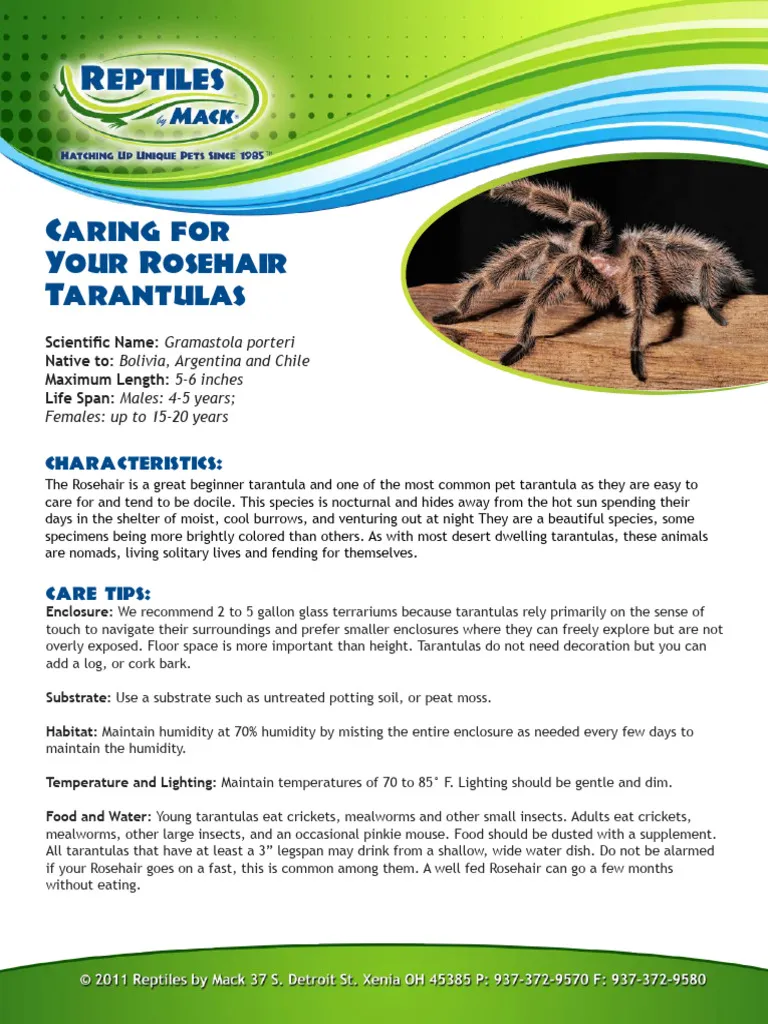
Learn to recognize signs of stress in your Philippine Dwarf Tarantula. These signs include flicking the legs, a defensive posture, or a refusal to eat. If your tarantula displays any of these signs, it is best to leave it alone and provide a more secure environment. Other signs may include rapid movement or an attempt to escape. Make sure that the enclosure is set up in a location away from loud noises or sudden movements. Provide plenty of hiding places in the enclosure. Always be patient and understanding with your tarantula, and provide a safe and comfortable environment. Minimizing stress is essential for the long-term health and happiness of your pet.
Caring for a Philippine Dwarf Tarantula can be a rewarding experience. By following these top 5 tips, you can create a thriving environment for your tarantula. Remember to provide a suitable enclosure, maintain the correct temperature and humidity, feed your tarantula appropriately, ensure a constant water supply, and handle your tarantula with care. With proper care and attention, you can enjoy the unique companionship of these fascinating creatures for years to come.
